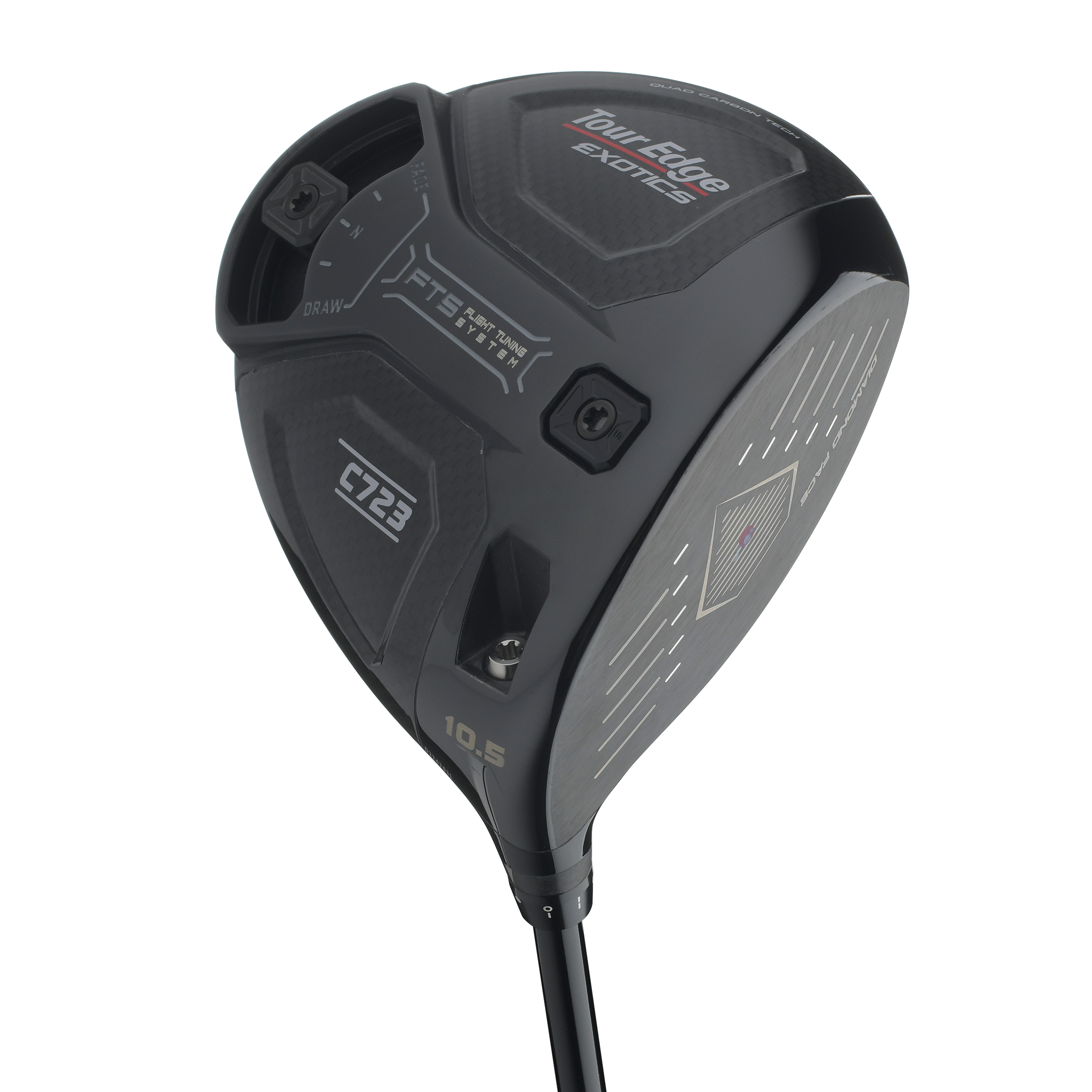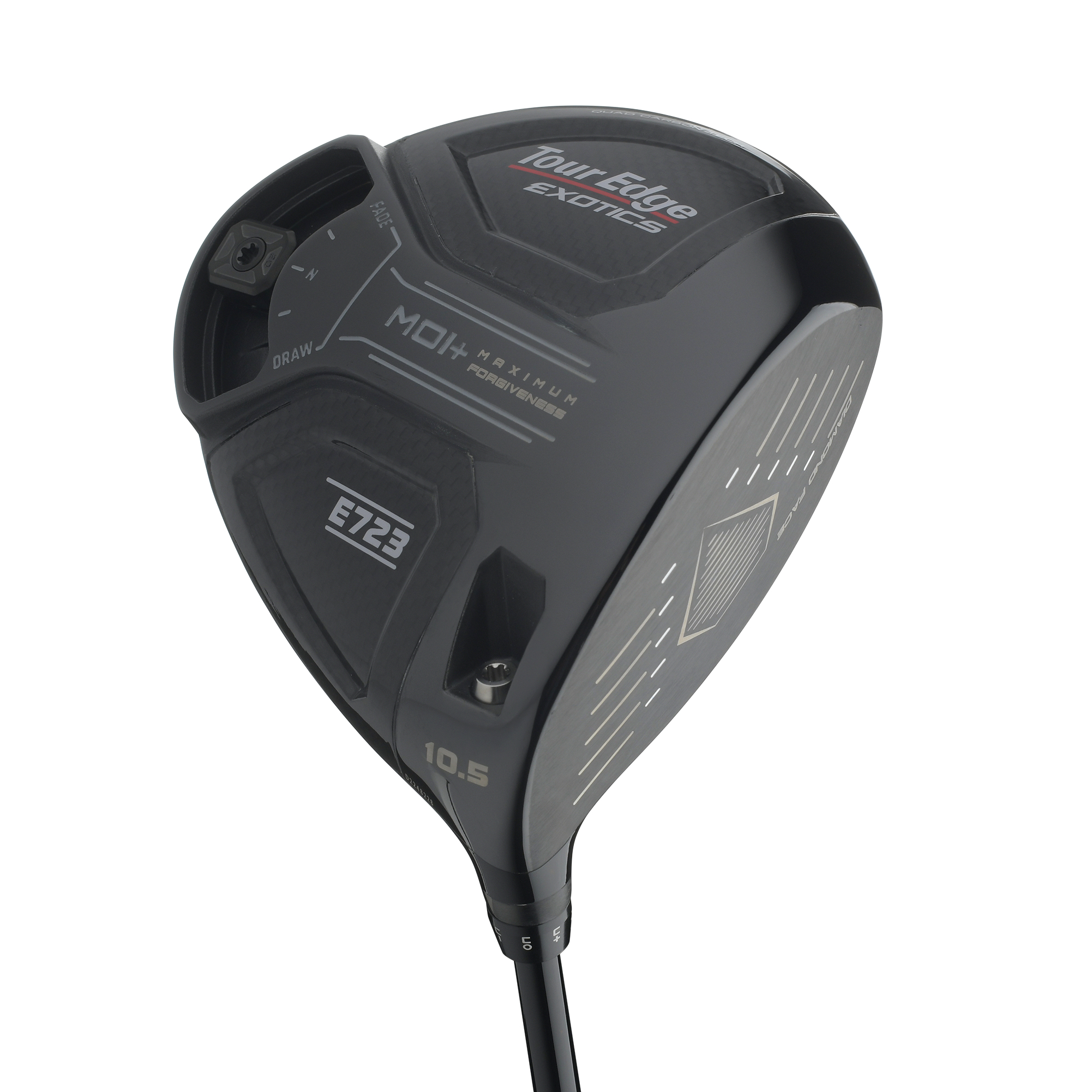Equipment
Tour Edge Exotics E723, C723 drivers: What you need to know

WHAT YOU NEED TO KNOW: Tour Edge updates its Exotics line of drivers with the new C723 and E723 models. The Exotics 723 is the most technologically rich line of drivers in the Tour Edge stable, and these two models mix four weight-saving carbon composite crowns and sole sections, with adjustability that shifts the center of gravity. The two models focus on two different groups of players, with the C723 targeting better players looking to reduce spin and the widebody E723 providing maximum forgiveness.

PRICE: C723 ($500, 8, 9, 10.5); E723 ($450, 9, 10.5, 12). Available for presale on Feb. 8 and in stores March 1.

3 COOL THINGS
1. Less is more. The Tour Edge Exotics line debuted a titanium skeleton in its drivers in 2021, with a central band of titanium joining the front and back of the body, which was constructed largely of four lightweight carbon composite pieces (two on the crown and two on the sole). That rigid band, known as “Ridgeback,” aimed to stabilize and direct more energy back to the face. Effective, Tour Edge’s team sought to improve it by thinning the structure to save weight while still bolstering stability and energy transfer.
Now nearly 25 percent thinner than when it was first introduced, the improved design on the E723 and C723 drivers still stabilizes the body to direct energy back into the face, and not just the center of the face, said Matt Neeley, Tour Edge’s vice president of product development.

The more compact of the two options (445 cubic centimeters), the C723 incorporates four carbon-composite sections on the crown and sole. The weight saved adds stability and creates discretionary mass for movable weights (15 and five grams) in not only the rear of the sole but the front as well. Either weight can fit in a back channel that slides to draw, fade or neutral positions, and placing the heavier weight up front further helps to lower spin. Its taller face is fueled by the largest collection of diamond-shaped indentations on the back for better ball speed.
“Having this titanium perimeter was actually helping with the deflection on our off-center hits,” he said. “We were able to increase the titanium around the perimeter without suffering much of a penalty because we were able to get rid of a lot of that extra titanium that we were using on the crown and kind of reposition it out on the perimeter and low and back.”
In effect, reducing the titanium freed up five percent more area on the driver’s body to be covered by lightweight carbon composite, compared to last year’s 722 line, Neeley said. That means the more average golfer friendly E723 model has the highest moment of inertia (forgiveness on off-center hits) of any driver in company history.

E723
2. Forgiveness made for pros and Joes alike. While the Exotics E723 is the larger, higher-launching and extra forgiving model, don’t sleep on the C723, which is plenty forgiving for a 445 cubic centimeter head. Because the majority of the crown and sole on both models is lightweight carbon composite, each model can incorporate a sliding weight in the rear that serves double duty by adding both forgiveness and directional control. On the C723 that weight is 15 grams, which pushes the MOI measurement well into the 5,000s, significantly high for all drivers, especially those in the C723’s relatively traditional shape. It also adds a 5-gram forward weight, and it can be interchanged with the heavier rear weight to create a lower-spinning option.

The larger footprint of the two models exudes off-center-hit forgiveness, which is enhanced by a 20-gram sliding weight in the rear perimeter. That positioning pushes the center of gravity deeper for off-center-hit stability, the highest in company history. Still, letting that rear weight slide to draw or fade positions can soften those kinds of mis-hits by as much as 10 yards, per the company. The face-thickness pattern, which features rows of interwoven diamond shapes, gets thinner on the E723 for extra forgiveness where the target player often makes contact.
Meanwhile, the E723 pushes all of that saved mass into a 20-gram weight in that rear position, and like the C723 it can be set in neutral, draw or fade locations. That’s important not just for average players, Neeley said.
“In the past, we had pushed our E driver to be a little bit more forgiving, maybe a little bit more draw-biased, and one of the things we found with that particularly on tour was a lot of guys who were getting fit into this driver were struggling a little bit with the draw bias,” he said, noting that keeping the movable weight in the back made it more effective without losing forgiveness. “So one of the biggest things that we wanted to do was offer some sort of draw and fade bias.”

3. Diamonds make this face prettier, too. Tour Edge’s drivers have used an interwoven pattern of diamond shapes on the back of the face for several models over the last few years, and the Exotics 723 models feature its most intense iteration. Not only are there 61 diamonds of seven different thicknesses across the face, the new pattern gives special attention to heel and toe mishits. By stretching the pattern into those extreme areas, there’s more deflection in the face on those weaker hits for less energy lost on mis-hits, Neeley said.
“We're getting more deflection with less stress,” he said, noting the Tour Edge engineers have used finite element analysis internally to stretch the design’s possibilities. “Realistically diamond face isn’t just about center face, it’s about being able to distribute that load across the rest of the face to reduce our weight in the face so we can redistribute it elsewhere and to increase the ball speed on those off center hits. That's where we're seeing the most benefits.”